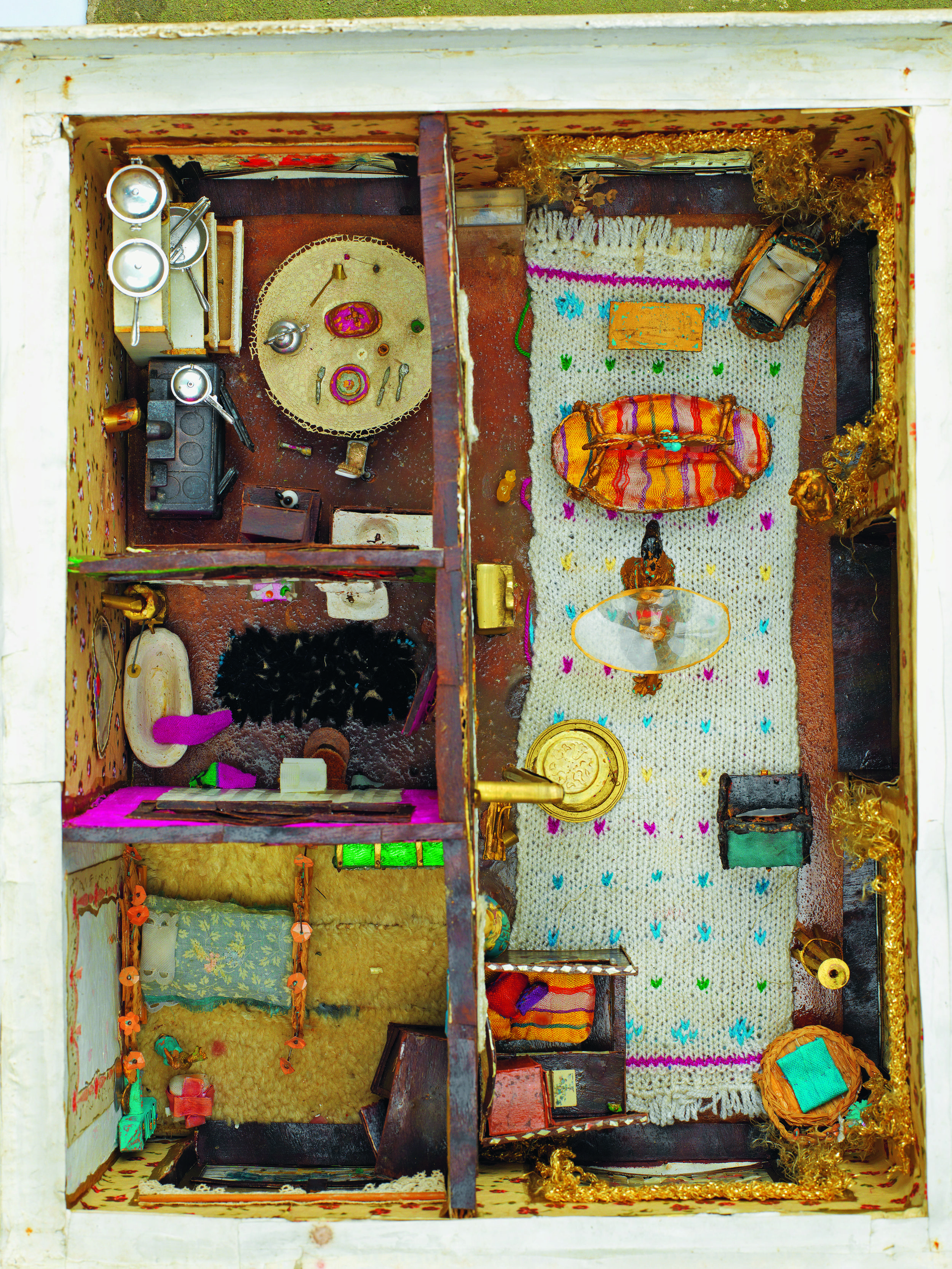Artist Profile: Füsun Onur
The artist Füsun Onur still lives in the house where she was born in Istanbul. A red house that overlooks the waters of the Bosphorus, she shares this childhood home with her sister, Ilhan. Theirs is a creative relationship that, like their home, informs much of Onur’s work.
‘The Dollhouse’ (1970s) is a case in point. A miniature doll’s house, the piece is captivating in its detail. The house is entirely complete from the stained glass in its windows, to the cutlery and crockery on its kitchen table. Most of the features were handmade including the furniture, rugs and the stoop outside the front doors. Although not initially conceived as a work of art, the collectors, Füsun and Faruk Eczacıbaşı, viewed ‘The Dollhouse’ as an extension of Onur’s practice and acquired it. Like many of Onur’s works, the delicate nature of the piece means that is has not previously been shown outside of Turkey. This material fragility parallels the fragility of the scene. The structure’s clear roof allows the viewer to peer inside, and in doing so compromises the private, domestic sphere. This could create a voyeuristic sensation in the onlooker, but instead it is a shared nostalgia that Onur extends to us. This comfort is numbed with an understanding of the world’s fragility - something that Onur is familiar with given the loss of her father, aged twelve. Crucially, where the house is full of domestic objects, it is empty of actual dolls.
Another work by Onur that is notable for its miniature scale is the mixed-media sculpture ‘Musical Chair’ (1976). The focus of this piece is a bright red chair, set at a slightly off-kilter angle as though it has been tipped back and held just before the moment of falling. A music box mechanism can be used to turn the chair slowly. This reveals a painted plate underneath with a figure made out with watercolours, only parts of which can be viewed through small, square windows. The figure’s limbs spin round in an unsupported free fall; suggesting a ghostly quality to the empty seat of the chair above. As with ‘The Dollhouse’, the self-contained scene recalls Joseph Cornell’s assemblage boxes - imaginative collages of the past created by an artist who rarely left his family home.
Onur is an established figure in modern Turkish art with a career that has spanned over fifty years. She is rightfully celebrated for having introduced the avant-garde into the country’s artistic canon in the 1970s through her innovations in form. In her earlier work, Onur regularly featured conventional shapes that she would then subvert so as to re-emphasise her own domesticity. In ‘Flamboyant’ (2007) a tulle shawl with decorative beading is tied around a plain square canvas, fastened with a brooch. The shawl lends the canvas protection, and so becomes the frame. Its maternal force is a striking contrast to the right-angled, wooden frames that usually fill art institutions. Again, in ‘Through the Looking Glass’ (1989) it is the empty frame that is the artwork - its embroidered and gilded sides striving to offset the missing subject. In this way, Onur uses the shape of the canvases to suggest a longing for that which cannot be retrieved. The work is deeply intimate work, even though it is abstract.
Everything that you see in these works has a connection to Onur’s house, her family, her childhood. She has created a dream-like world. To the outsider it evokes the transitory qualities of childhood, but for Onur it is a world that she still lives within.
Füsun Onur (b. 1938, Istanbul) lives and works in Istanbul. Graduating from the Academy of Fine Arts Istanbul in 1960, Onur received a Fulbright scholarship in 1962 and travelled to Maryland Institute College of Art to complete a Masters degree. With a career spanning over 50 years, Onur has played an important role in the development of modern Turkish art, including the introduction of the avant-garde into the artistic canon of Turkey in the early 1970s. Her work has been shown in solo and group exhibitions at Augarten Contemporary, Vienna (2010), Istanbul Modern (2011) and ARTER, Istanbul (2014). She has also participated in the 7th Biennial of Young Artists in Paris (1971), ‘Open Air Exhibitions’ organised by the Istanbul Archeology Museums (1974 and 1977), documenta 12 (2007), the Istanbul Biennial (1987, 1995, 1999, 2011) and the Moscow Biennale (2007).
Füsun Onur, Musical Chair, (1976), image courtesy of Hadiye Cangokce.
“She has created a dream-like world. To the outsider it evokes the transitory qualities of childhood, but for Onur it is a world that she still lives within.”
Füsun Onur’s home, Image courtesy of Ali Kamza.
Füsun Onur, ‘The Dollhouse’ (1970s), interior shot, image courtesy of Ilhan Onur.



